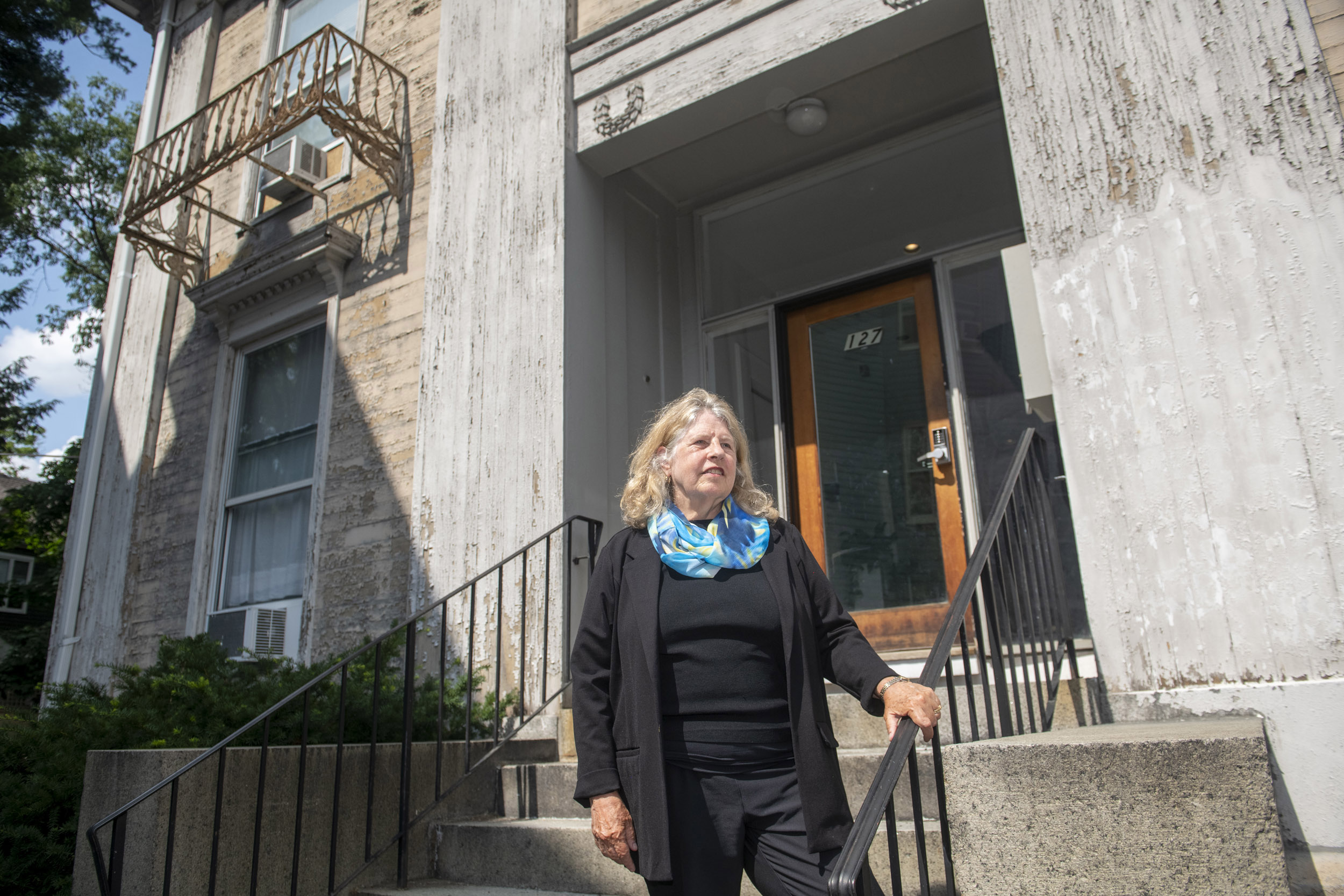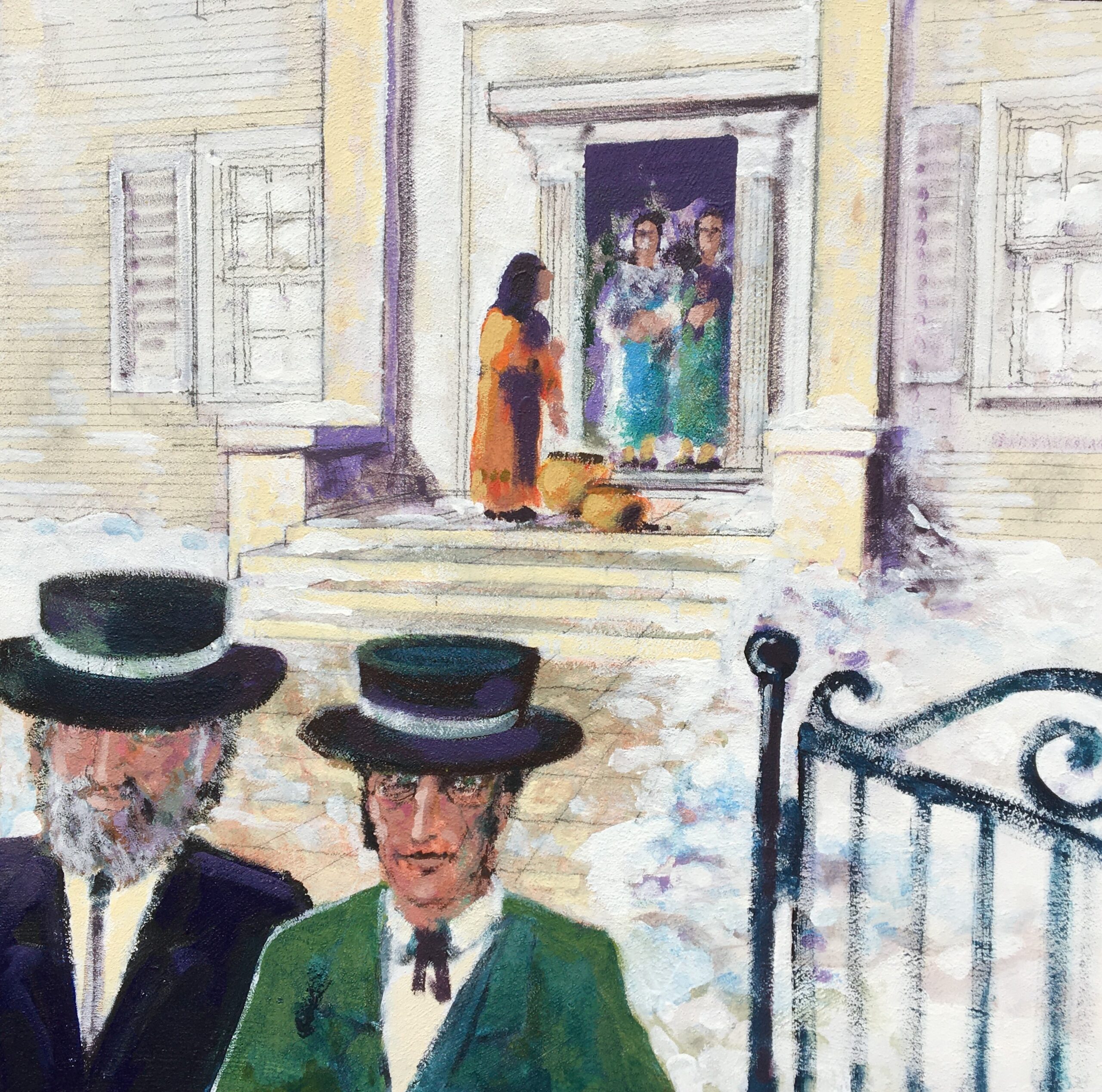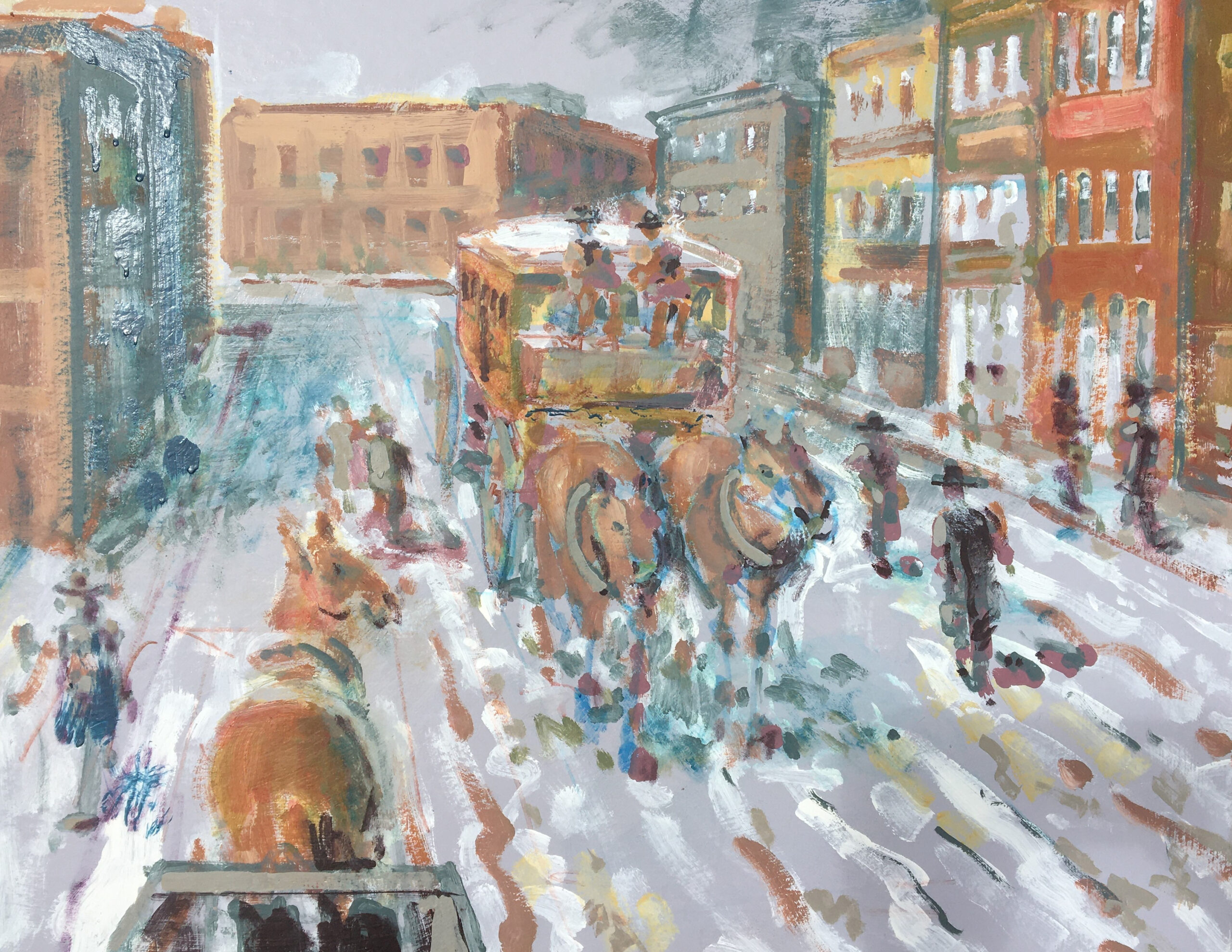
Professor Suzanne Preston Blier at the Harriet Jacobs house in Cambridge. Jacobs was a former slave who became an abolitionist and women’s rights advocate.
Jon Chase/Harvard Staff Photographer
A people’s history of Cambridge
Professor tells story of city from Indigenous origins to present in children’s book illustrated by alum
For the last three years, Suzanne Preston Blier has been teaching a course close to home with an unusual requirement.
Students who take “Harvard Square: Social History of Cambridge, MA” must speak at a local government meeting. “My real goal is to urge students to become active wherever they end up living,” said Blier.
That same passion for local involvement and Cambridge history led Blier to her most recent writing project: a children’s book titled “The Streets of Newtowne: A Story of Cambridge, MA.”
Geared toward readers ages 9 to 11, the book weaves together the histories of Indigenous peoples, Puritans, the American Revolution, slavery and the Civil War, industrial growth, immigration, and the growth of Harvard. It features colorful illustrations by artist Jim Blake, a 1979 alumnus of the Graduate School of Design.
“The key thing was to bring this history from its Indigenous origins up to today, and showcase not only the well-trodden pathways of Boston-area history, but also many of the people that we’ve left out of that history: African Americans and women and Indigenous people as well,” said Blier, the Allen Whitehill Clowes Professor of Fine Arts and Professor of African and African American Studies.
Newtowne was originally built to be the capital of Massachusetts. Established in 1630, it was the first planned city in the U.S., laid out on a grid with straight streets intersecting at right angles. But in 1638, after the capital was moved to Boston and Harvard College was established, the city was renamed “Cambridge,” after the university city in England.
“In a way, it’s a story of our larger country,” Blier said of her first foray into writing children’s literature. “While it takes place here, there are many elements that have resonance elsewhere, particularly on the Eastern coast.”


An Indigenous woman selling handmade baskets door to door. A horse-drawn omnibus streetcar driving through Cambridge. Both illustrations reflect the mid-1800s.
lllustrations by Jim Blake
The book is told from the perspective of the city’s streets as they observe the footsteps of the Massachusett, the first documented people in the area, then horses’ hooves and carriage wheels, and later automobiles and an underground subway system.
Blier’s book tells stories that many young people likely already know — the arrival of the Mayflower, the Boston Tea Party, Paul Revere’s ride — and stories that are less-known — how disease brought over by white settlers impacted the Indigenous inhabitants, how enslaved African people labored in the houses of rich Cambridge residents who owned plantations in the Caribbean, and how immigrants changed the landscape of the city.
“We are really a diverse city,” Blier said. “We always have been.”
Blier is involved in the community as a founder of the Harvard Square Neighborhood Association, an activist group focused on local issues including the environment, housing affordability, and public transportation. In May, the City of Cambridge and the Cambridge Historical Commission issued Blier a certificate of merit for her contribution to the public’s understanding of Cambridge history.
While the intended audience for “The Streets of Newtowne” is young readers, Blier hopes it can also appeal to parents, librarians, teachers, and even tourists.
“History is important, and we too often forget it or just assume that once one story has been told, we don’t need to know more,” she said.




